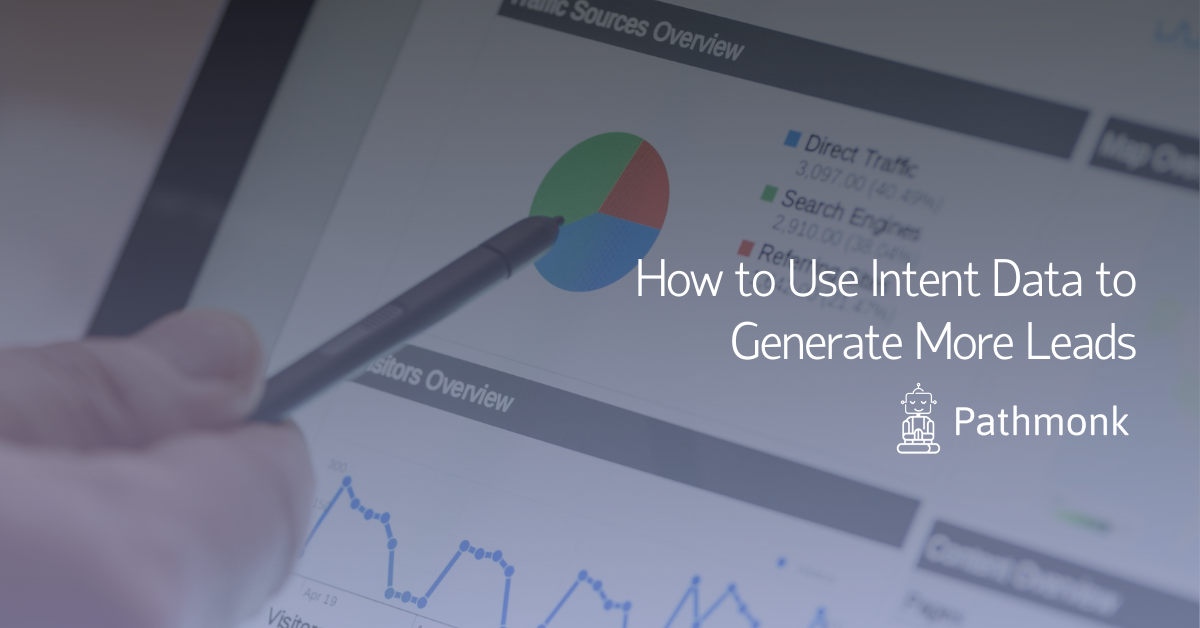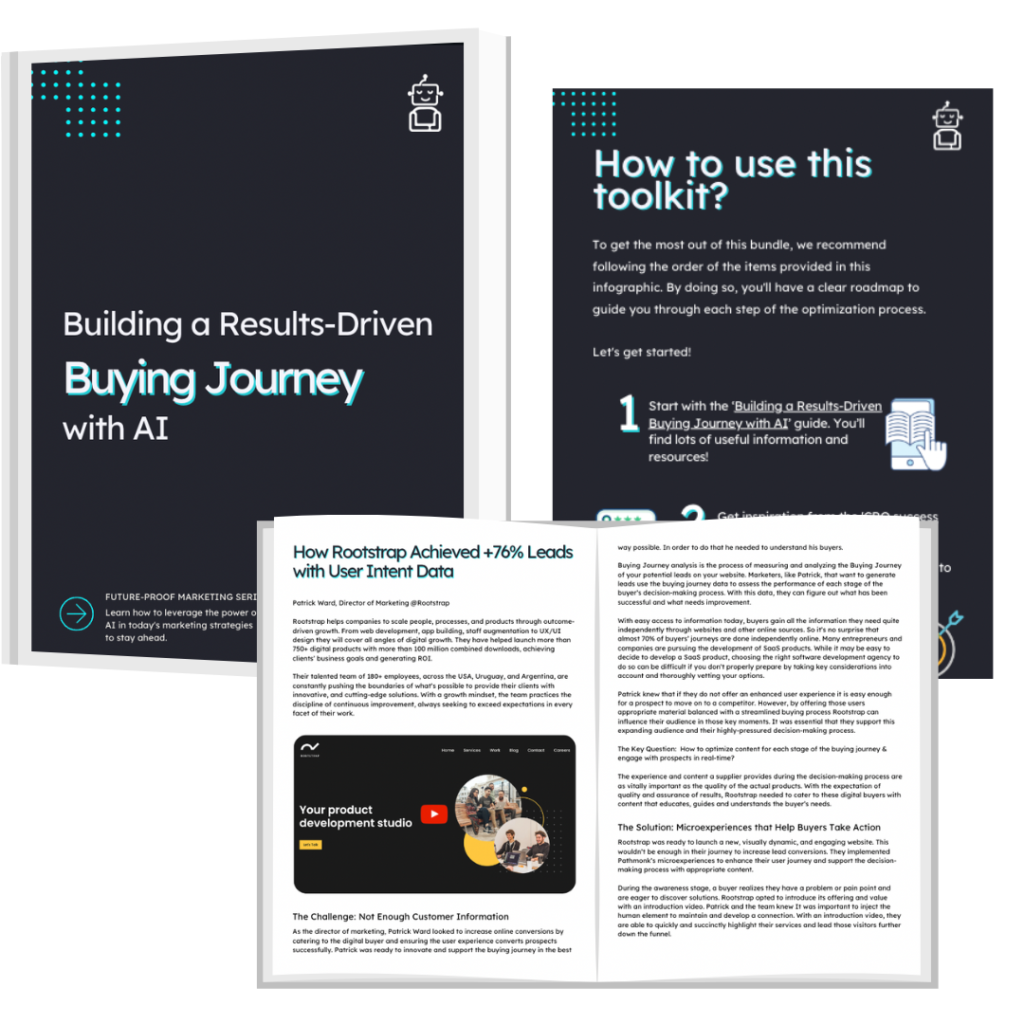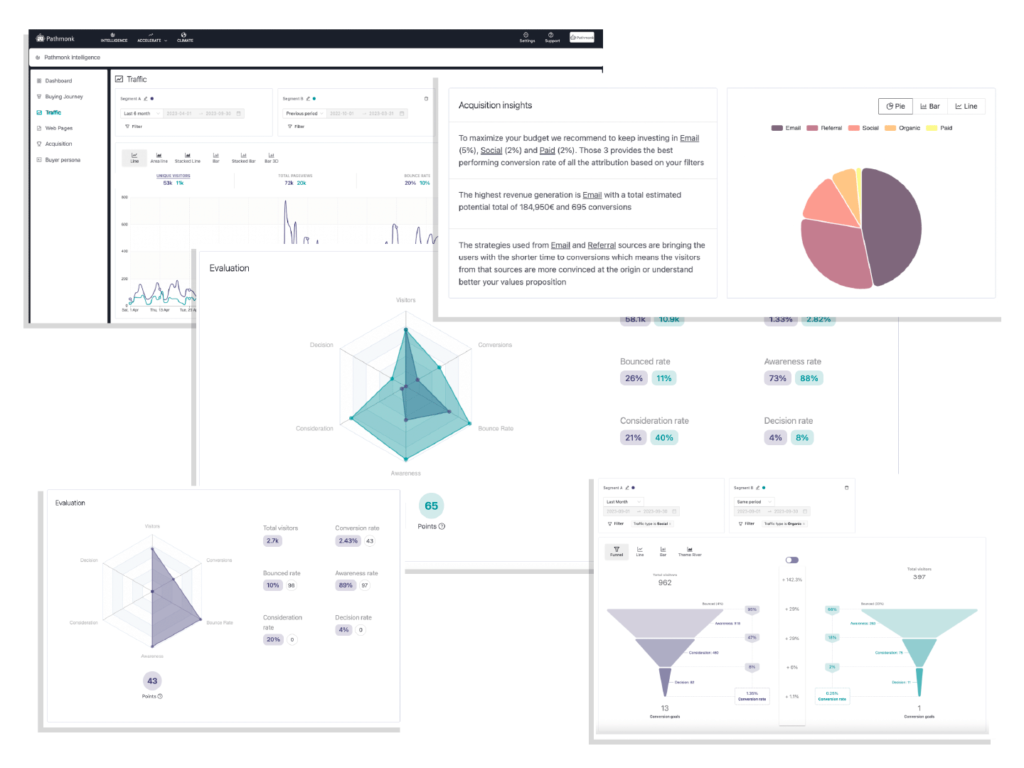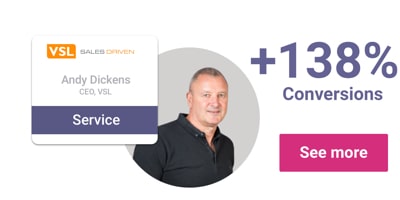How to Use Intent Data to Generate More Leads


What is intent data, and how does it differ from other types of information? How do you know whether and when a target is interested in buying your product or service? Due to only a small percentage of your prospects actively shopping at any given time, it is critical to identify their purchasing intent and target them accordingly.
The data reveals which leads are actively conducting product research. Only a minor percentage of the time is intent data used alone. This information helps marketing and sales teams gain insights into purchasing motivations, areas searched for specific problems, intent level, and other customer intelligence by integrating third-party data sources with website information collected over time.
When your customers have problems, they go to different websites, read articles after articles, and download whitepapers or eBooks that can provide them with the answers they need.
Your B2B intent data tells you what your potential customer is interested in and assists you in deciding whether or not they are ready to purchase.
In most cases, the information is made up of a variety of actions that a lead has taken or has not taken during the sales process, such as:
- Visiting specific web pages on your site
- Viewed resources or topics looked at on your blog
- Various content that was accessed outside your site
- Sales or marketing material or collaterals that have been requested
- Interaction and engagement with outbound efforts
You have made the crucial choice to start using intent data to generate more leads. To support your sales team in closing more deals and the marketing team to deliver more purchase-ready leads, you may want to include intent data in your range of sales and marketing resources. However, do you want to get the best out of your decision but are not sure how to go about implementing this strategy? We can show you how to use intent data.
Free AI-Powered Buying Journey Toolkit
Learn how to optimize your buying journey and speed up your revenue with top strategies and invaluable resources.

Different Types of Intent Data
Right now, potential customers are looking for the goods and services you offer.
They are reading material and conversing with competitors’ members. The data of target customers who are currently on their way through the buyer’s journey is captured using intent data. The type of information intent data provides you with is determined by the source.
Businesses can monitor B2B buying intent from a variety of online and offline sources. Three sources are used by software manufacturers. These different forms include first-party or internal intent data, second-party intent, and third-party or external intent data. Lead generation can be generated from all these various types. Let us take a further look at these.
First-party or Internal Intent Data
Prospect activities that your advertising automation system collects from your website and other platforms are examples of this type of information. For example, it tells you how many of your prospects have viewed or visited your website but have not interacted with the brand, or how many individuals have downloaded your online content.
Second-party Intent Data
When a corporation sells its first-party data, it is referred to as second-party intent data. They gather data on their customers and bundle it for sale to other businesses. The following information is included in this database: contact name, job title, business, email address, and contact number.
Third-party or External Intent Data
This type of data collects information about your prospects from places other than your marketing campaigns or specific website. These come from third-party sources such as data collection at the IP level or user registrations, publisher networks, and mutual cookies.
Businesses often form partnerships with publisher sites to gain access to their users’ behavioral stats. Data co-ops are used in other sectors, where a system of publishers, technology suppliers, and consulting firms share data to obtain deeper information from all users within the co-op.
How to Use Intent Data for Lead Generation
There are various stages involved in using intent data for lead generation. The first thing you can do is submit your data lead lists to the sales creation representatives, who can evaluate and contact the most qualified leads.
Alternatively, you can have your professional marketers upload the intent data to the marketing automation platform and begin cultivating leads with personalized emails and advertisement tactics. By implementing either or both of these, you are well on your way to increasing close rates and sales growth in your organization.
When using intent data to generate leads, keep the following in mind:
- Know your prospect
- Understand the marketing metrics
- Follow-up with your prospects as soon as possible
Know Your Prospect
Personas should be created for intent-based advertising. Get feedback from key stakeholders on both the marketing and sales sides of the business as you build your customer profiles. To help you with the process, ensure you can answer the following questions:
- What are the problems that your target audience is concerned about?
- What are the hottest issues in their respective fields?
- When they are looking for solutions regarding your specific business, what keywords do they use?
- What kinds of events does your ideal customer attend?
- What magazines do they read and trust in the industry?
Understand the Marketing Metrics
Evidentially, metrics can differ depending on business preferences, but thorough calculations reveal the essential details, such as:
- Conversion rates for leads
- Timing of the sales cycle – the time from the initial contact to closing the deal
- Return on investment (ROI) for lead generation
- Progress in growing the company’s brand or product presence in key channels
- Developing account-based marketing (ABM) systems
Follow-up with Your Prospects as Soon as Possible
Since your prospects are jumping from one business to the next in search of the ideal one for them, speed is critical. A quick response time improves the chances of converting a lead into a customer. Your sales representatives should respond quickly by emailing the prospect with content that is tailored to move the conversation forward and direct them through the purchasing process.
Why Is Intent Data Important for Getting Higher Quality Leads?
Do you want to generate more leads with intent data? This information is crucial in producing high-quality leads due to the various benefits it offers. These advantages include:
- Improved advert targeting – The available insights make it easier for marketing professionals to improve their advertisement targeting with improved messaging and an approach to specific target profiles.
- Prioritizing prospects – Sales and marketing teams can easily prioritize and identify certain relevant leads while basing their decisions on the prospects’ likelihood of purchasing products or services.
- Customized and specific messaging – This specific information informs you about the different intentions and interests of potential customers. Why do you need this data? It helps B2B marketers to create specialized content around the mentioned topic interests and challenges.
- Nurture and support – Intent data helps identify the particular buying stage a prospect is at and the issues or areas preventing him or her from finalizing the deal. Therefore, you can take the necessary action to produce the desired content to interact, engage, and nurture the potential client at the ideal time.
Intent Data Sources
People can collect intent data from software tools such as Pathmonk. Our platform gives users access to different levels of information. Pathmonk enables marketers to analyze the individual actions of each prospect, which then predicts their intention and produces micro-moments to convert the visits into leads.
With the use of Pathmonk, you can automatically deliver unique experiences to prospects. Each visitor has a customized journey, no matter the stage they are at or the device they are using. What can you achieve by applying Pathmonk?
- Improve website leads
- Influence the buyers on your website by using timing and relevance of the company message
- Increase return on investment on advertisement spending
Pathmonk’s key to success lies in delivering consumer-centered user experiences that meet customers’ expectations and reflect the various stages of the purchasing journey. How does the platform achieve this? Pathmonk evaluates every scroll, click, revisit, and so much more.
Additionally, people use this data to automatically predict the following steps a visitor is going to take on the website, which enables you to give them a unique and personal experience.
The Bottom Line:
When it comes to intent data, it is not uncommon for it to be incomplete. Since some visitors could research on out-of-network sites or be registered under the incorrect IP address, using intent data to concentrate specifically on profiles who display interest results in missing some accounts that are interested but could not be retrieved by the information provider’s network.
The best way to generate more leads is to combine it with other information to construct an all-encompassing scoring model.
It is critical to put the intent data to effective use, whether collected via first-party or third-party sources. You must remember that they are not just there to provide you with a numerical estimate of how many prospects are willing to buy from you. When putting together a certain lead generation campaign, try to be strategic and use it to your brand’s benefit. Pathmonk can help you make the most out of your marketing strategy.
Intuitive Cookieless Analytics for Your Web
Understand your customer journey, find drop-offs, and receive actionable insights with AI.







